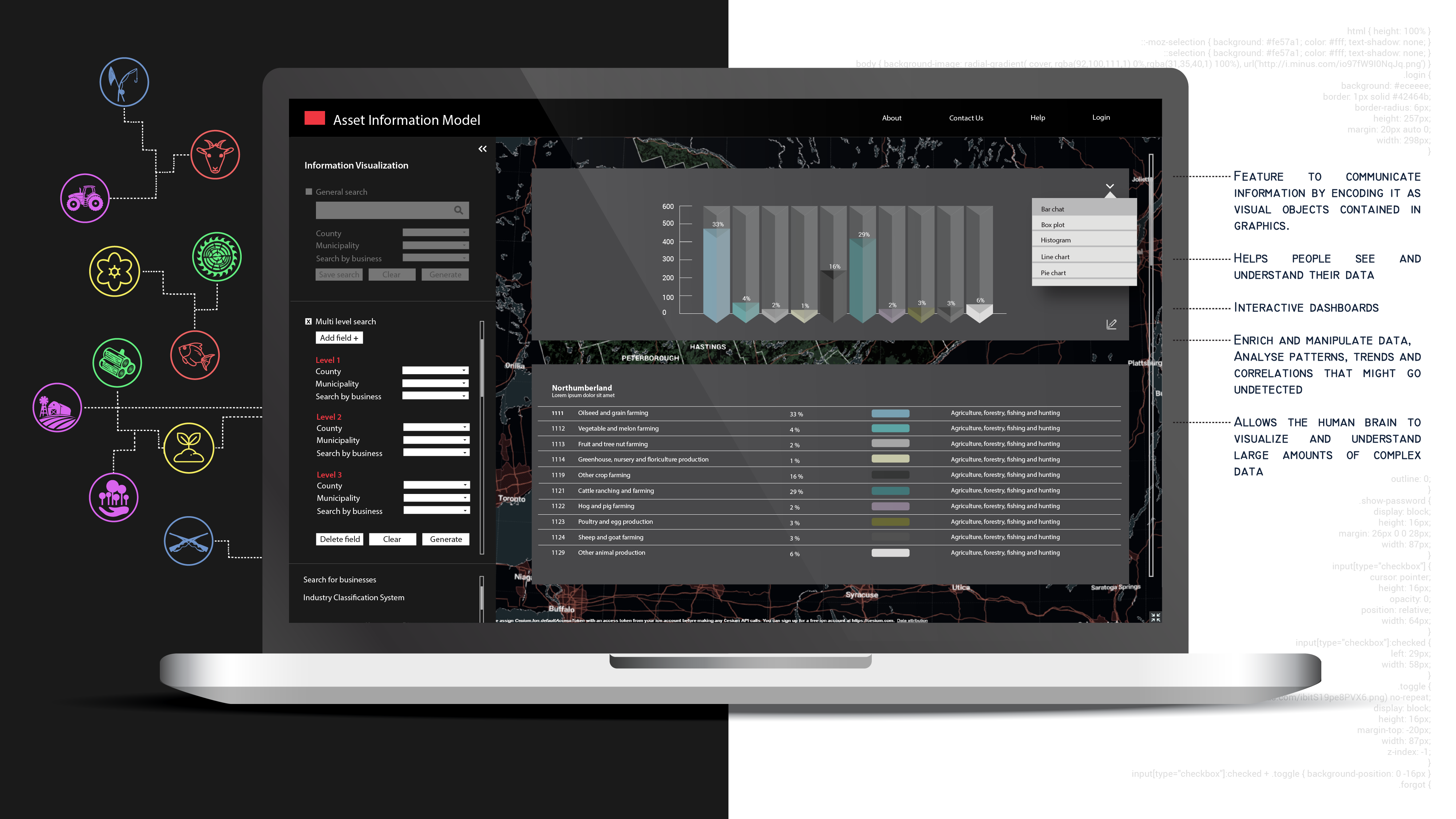To view all HCI theses in the Carleton Library, click here
Sample Theses
Data Visualization of Geospatial Data for Future Business Investments
By Mahathi Meruga
Supervised by Dr. Stephen Fai

Abstract
Economic developers make elective decisions and solve problems in complex or ambiguous situations by gathering, diagnosing, and judiciously analyzing the information about the situation and environment in order to identify and evaluate options and select best course of action (Leigh, 2017). With increasing globalization and corresponding shifts in market and production infrastructures, the demand for a web-based tool to efficiently address these types of problem solving is increasing. The research undertaken for this study leverages recent developments in Asset Information Modelling (AIM) — considered here as a framework for managing inter-related geometric, graphic and text data for asset management and customer engagement. Our study considers the qualities of user experience — including statistically significant changes in the workload and accuracy of decision making — by comparing text search and data visualizations. Click here to learn more.
CountMarks: Multi-Finger Marking Menus for Mobile Interaction
with Head-Mounted Displays
By Jordan Pollock
Supervised by Dr. Robert Teather
 Abstract
Abstract
Head-mounted displays (HMDs) are becoming thinner, lighter and wireless. Soon we may see these displays used in public in devices like smart glasses. In this thesis, we designed, implemented and evaluated a novel multi-touch marking menu technique for use with HMDs. CountMarks extends conventional marking menus (gesture-based radial menus) by using multi-finger input on a mobile phone screen. This supports selecting items from each of four menus (one for each finger) with a single swipe, reducing the need for deeper menu hierarchies. We discuss the design of two variations of CountMarks, exploring selection efficiency, public acceptability, and ergonomic comfort. We conduct two studies: the first compares CountMarks to a traditional marking menu and finds one variation of CountMarks makes faster selections and allows for better search accuracy with only a small reduction in selection accuracy. Our second study evaluates CountMarks while standing and walking and with interaction occurring on hand-held and leg-mounted devices. Our results show that CountMarks can be used in the hand while standing or walking, and we confirm the difficulties with leg interaction. We evaluate the types of errors made by participants to suggest improvements to CountMarks as a whole and for leg interaction in particular. Finally, we present an application demonstrating the implementation of CountMarks in an existing user interface and we suggest directions for future work. Click here to learn more.
